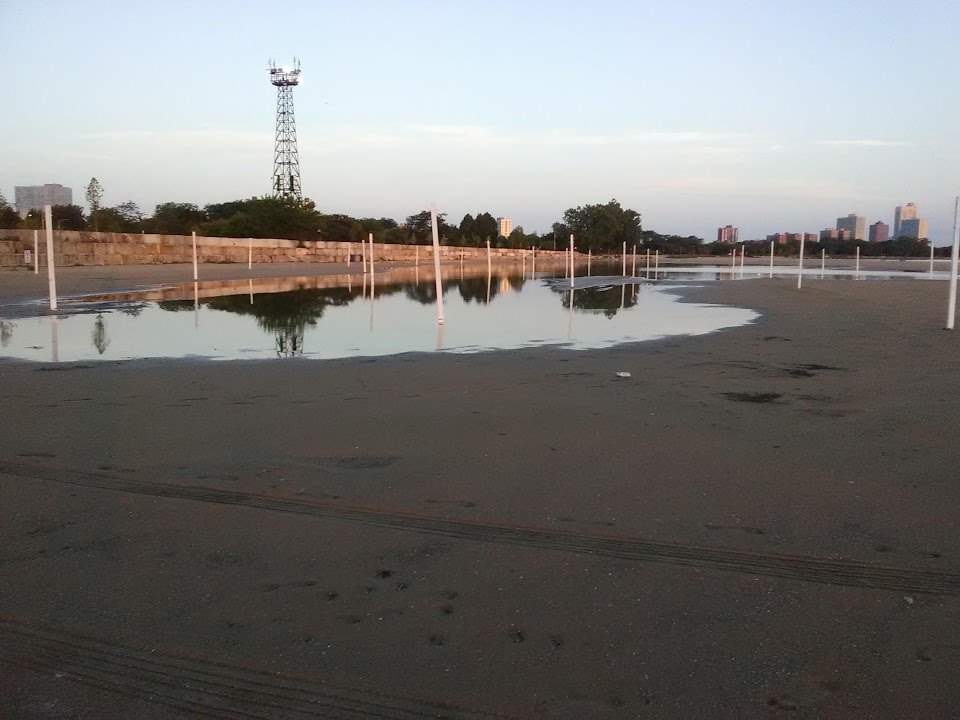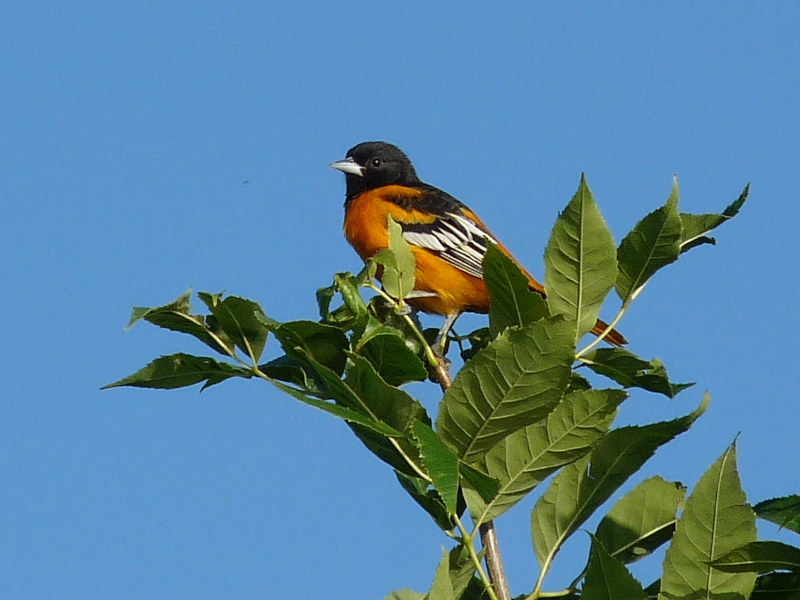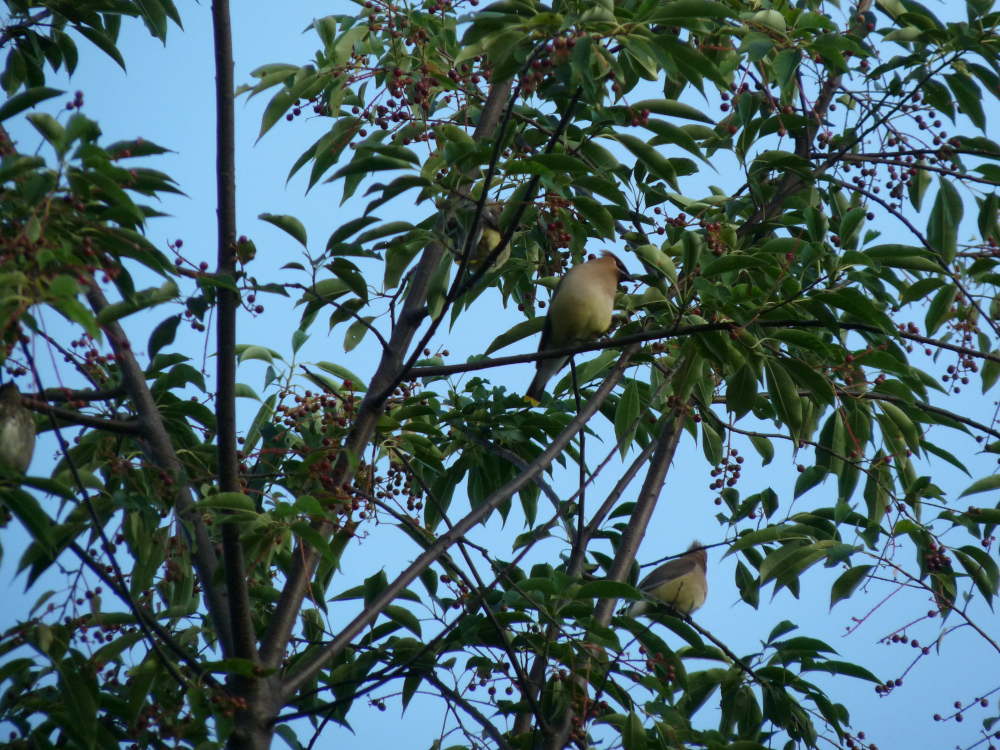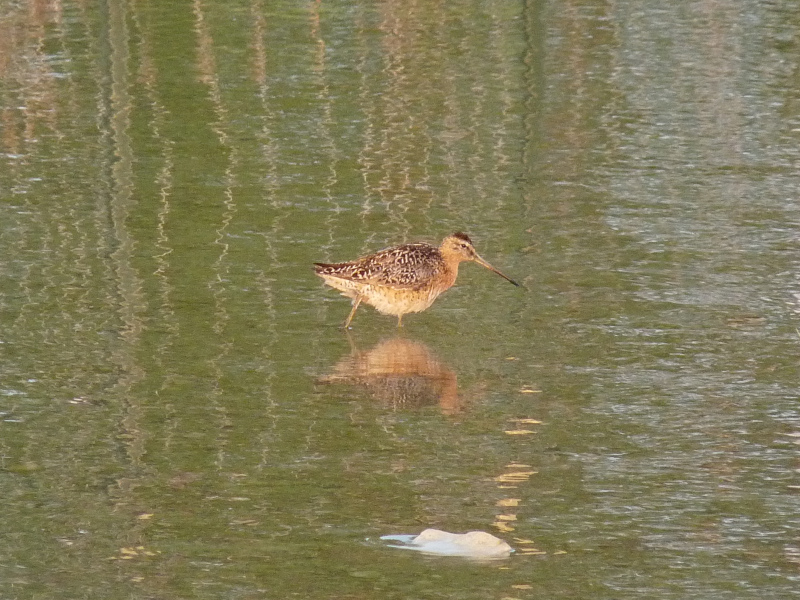The heavy rain on the night of August 24 flooded parts of the Dunes and beach at Montrose, creating shorebird habitat. Before the rain the Dunes and beach were bone dry. We’ll see how long this habitat lasts. We’re in the peak of shorebird migration, so additional rain can only help.
Category Archives: Summer Bird Reports
Whimbrel Time
A Whimbrel made a brief appearance at Montrose on August 22, the first one reported this summer. We’re coming into the peak time for Whimbrels, from late August to early September. Take a look at the screenshot below from eBird.

Obviously the beach is the best place to look for Whimbrels. We see them along the shore, up on the beach mixed in with Ring-billed Gulls, in the Dunes, and flying by. Whimbrels are vociferous birds and their loud, excited call is distinctive. Don’t forget to check the beach and Dunes in the afternoon and evening too.
Picking Up (Migration, That Is), August 16, 2021
We’re about a month from peak landbird migration but we’ve been getting a steady trickle of Empidonax flycatchers, cuckoos, Baltimore Orioles, Blue-gray Gnatcatchers, Ruby-throated Hummingbirds, and a few warblers, all expected late summer/early fall migrants. On the flip side, the Tree, Bank, and Northern Rough-winged Swallows that were such a visual and noisy presence in the Dunes have moved on. We’re still seeing Barn Swallows and Purple Martins, but the martins are getting restless and will be gone in a few weeks. Link to my eBird checklist for August 16 below.
eBird Checklist
August 16, 2021
We Have Liftoff!
On August 10 I saw the two surviving juvenile Piping Plovers, Imani and Siewka, make sustained flights, first out over Lake Michigan north of the beach and back, and then over Lake Michigan east of the Point. One of the adults accompanied them on these sojourns. This is the first time I’ve seen them fly for any distance or length of time. Before they could fly, the young plovers were vulnerable to a variety of avian and mammal predators and competitors, including gulls, Cooper’s Hawks, Peregrine Falcons, Great Blue Herons, Raccoons, skunks, and aggressive parental Killdeer. Now they have at least a fighting chance against these threats and their chances for survival increase dramatically. Two of the siblings from the 2021 brood disappeared before fledging and were likely lost to predators.
2021 is the third year in a row Monty and Rose have raised young at Montrose to fledging, a monumental conservation success story by any measure.
Check Those Cherry Trees, Early August, 2021
Montrose hosts a variety of trees whose seeds or fruit are good for several different kinds of birds. One of these trees, Black Cherry (Prunus serotina), is producing ripened fruit now that is attracting Cedar Waxwings, American Robins, and Baltimore Orioles. A good stand of cherry trees is in the Magic Hedge towards the north end. The loose clusters of pea-sized red or purple berries and flaky bark on larger trees help identify them. Another stand of Black Cherries is next to the Purple Martin houses on the northwest side of the harbor.
Shorebirding, July 2021
We’ve been seeing migrant shorebirds at Montrose Beach almost daily since late June. Most have been Least Sandpipers, but we’ve also had Lesser Yellowlegs, Willet, and American Avocet. On July 14 I had a Short-billed Dowitcher, my first of the year. These are all expected early summer shorebirds.




